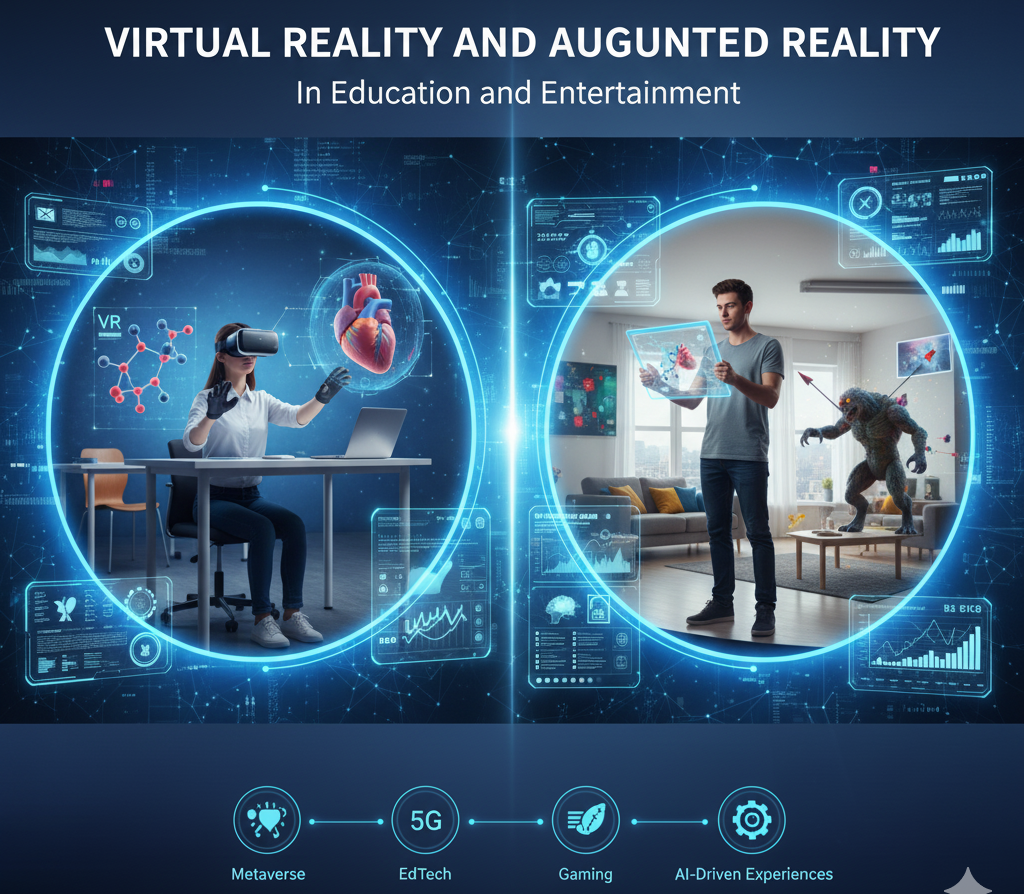Tech
Virtual Reality and Augmented Reality in Education and Entertainment
Virtual Reality (VR) and Augmented Reality (AR) are transforming how we learn, work, and experience the world by offering immersive, interactive experiences. This article explains the difference between VR, which creates fully immersive digital environments, and AR, which overlays digital information onto the real world. It highlights how these technologies are impacting education with virtual labs, entertainment with immersive concerts, and healthcare with surgical assistance. The article concludes that with the rise of Metaverse platforms and 5G networks, VR and AR are set to become core elements of our digital future.


















